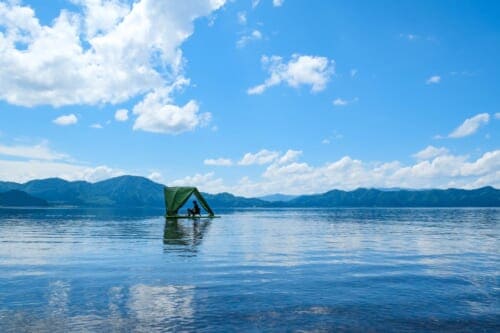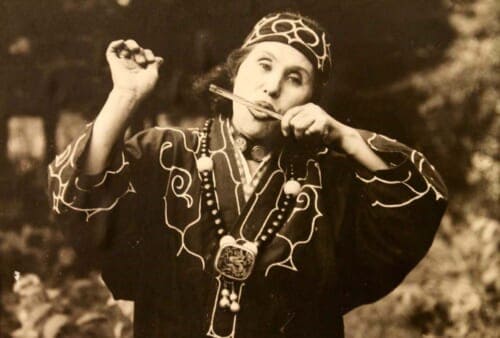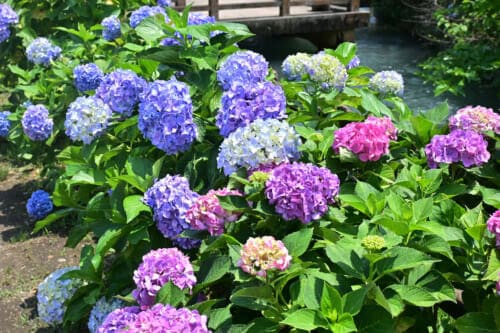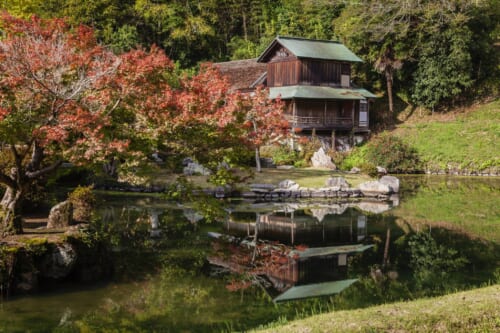On arriving in Japan a decade ago, one of my early purchases was a photo book documenting kakigori かき氷, the airy, refreshing, and often beautiful Japanese dessert made using shaved ice. The book contained exquisite photos and details about 365 types of Japanese shaved ice, one for every day of the year. The existence of this book says as much about the national love for this dessert as my own. Indeed, although kakigori is at its peak of popularity during the hot summer months, the Japanese find excuses to eat it all year round.
What makes a dessert that is essentially frozen water so popular? For starters, Japanese shaved ice is like no other shaved ice in the world. Japan’s vast network of spring water ensures the ice itself is pure and delicious, and many shops use hand shavers or well-tuned automated ones to ensure that the texture of the ice is fluffy, soft, and smooth. Once the foundation of the ice is laid, fresh ingredients, often uniquely and traditionally Japanese, are layered into the dessert so that every frozen mouthful is memorable.
The History of Japanese Shaved Ice
While desserts made with crushed or shaved ice are common throughout Asia: Korea’s bingsu, the Philippines’s halo halo, and Taiwan’s tshuah-ping to name a few, Japan is likely one of the first countries in Asia to develop this refreshing dessert, having access to natural ice long before the development of refrigeration. Although the exact time frame of kakigori’s invention is unknown, the enjoyment of Japanese shaved ice was documented in the Heian period in the text of the acclaimed historical novel The Pillow Book by Sei Shonagon, a lady of the Imperial Court. At that time, enormous blocks of ice were produced for the royals in special facilities during the winter months and carefully stored to last through the summers.
It wasn’t until the early Meiji period in the latter part of the 19th century that the masses could enjoy kakigori, first by transporting imported ice and domestic ice from Hokkaido throughout the nation, and later, by the invention of the ice machine. The people of Yokohama were likely the first to enjoy Japanese shaved ice for the masses, with the establishment of the first kakigori shop in Bashamichi around 1870.
Endless Styles of Japanese Shaved Ice
As evident in the 365 styles of kakigori in my photo book, the Japanese are endlessly creative when it comes to making desserts out of shaved ice. The most basic style uses condensed milk and sweet syrup, often a fruity flavor like strawberry or mango, but sometimes made with traditional ingredients like matcha or brown sugar. But every season, new trends sweep across the nation, adding non-traditional ingredients to the mix: tiramisu, meringue, and chocolate mousse.
Japanese shaved ice chefs also love to play with the shapes of their creations. Traditionally made like a mound of freshly fallen snow, you can now find shops serving impossibly tall towers of kakigori and creations shaped like cute objects, animals, and popular anime characters.
One of the earlier and more popular forms of kakigori is the shirokuma, which means white bear, invented in Kagoshima Prefecture. It is made with chunks of fruit, sweet bean paste, and condensed milk, which gives it a white color. Even 7-Eleven serves up its own premium version of shirokuma, often found in the ice cream section of many stores. The origin of the name is widely contested, but some shops serve it in the shape of a bear, making it an adorable and delicious dessert.
When and Where to Eat Kakigori
Although Japanese shaved ice is most widely available when the weather heats up from June to September, you’ll find shops selling kakigori year-round if you search hard enough. But let’s be honest, kakigori is practically a necessity for surviving the brutal heat of Japan’s summers, so it is certainly a treat you should partake of during a summer trip to Japan as often as possible.
During the summer, shaved ice appears on the seasonal menus of many cafes and family restaurants, in addition to the specialty shops that serve it throughout the year. Especially around traditional neighborhoods frequented by tourists: Tokyo’s Asakusa, Kanazawa’s Higashi Chaya, and Fukuoka’s Tenjin, it seems the little blue and white flags with the red kanji for ice 氷 (indicating shaved ice is on the menu) pop up outside every other shop.
Perhaps one of the best places to experience eating kakigori is at a summer festival in Japan. Better still, dress up in a cool summer yukata and head out to a fireworks festival, Obon or Awa Odori dance festival, or a themed gathering in a public space like Yoyogi Park, and you will surely find numerous festival booths shaving ice for the masses. It might be only the most basic type of Japanese shaved ice, but enjoying it outdoors in a party atmosphere with your friends is an experience in Japan you’ll always remember.
So, in summer, winter, spring, or fall, make sure kakigori is on the menu to experience one of Japan’s unique desserts that locals have enjoyed for well over 1,000 years. But don’t blame me if you start craving it 365 days a year. Fortunately, there’s a book for that.











No Comments yet!